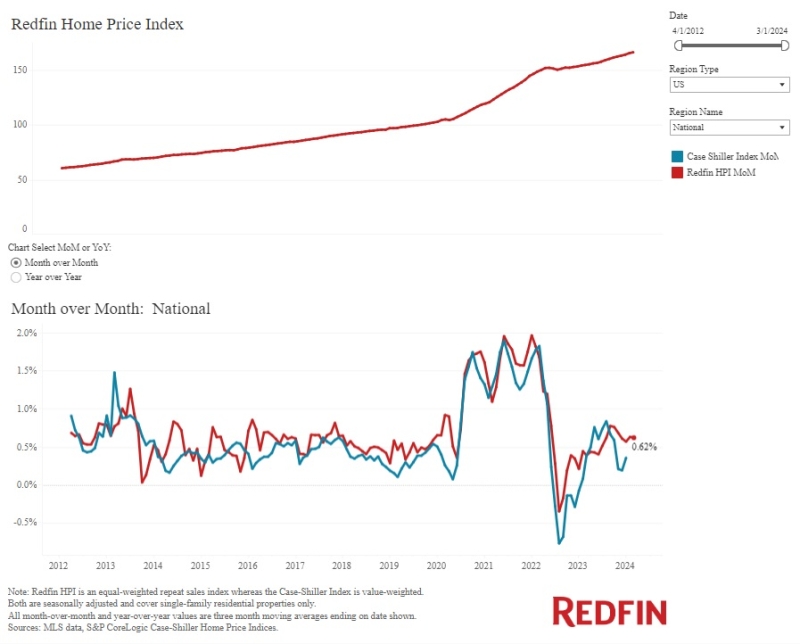Advertisement
GLBA compliance: Save thousands on overhead and make more money at the same time

Many mortgage originators are unknowingly violating the Gramm-Leach-Bliley Act (GLBA) by not adequately protecting the non-public personal information of borrowers. When disclosure docs are e-mailed, faxed or stored in an unsecured office or file cabinet, there are often no safeguards for privacy protection as dictated by the GLBA. This exposes you, your loan officers to a lesser extent, and your lenders to potentially huge legal liability. With more regulatory compliance scrutiny than ever before, and consumers more concerned about breaches in privacy, it’s critical that we protect their information and ourselves from this potentially very expensive liability.
eSignatures are a great first step to solving compliance risks. eSignatures keep client information secure and GLBA compliant. Since 2005, my company, American Dream Residential, has used eSignatures on disclosure docs to ensure compliance with GLBA. In 2009, when the new Real Estate Settlement Procedures Act (RESPA) laws took effect, we were glad we made the choice to adopt eSignatures because they provide an audit trail that proves Real Estate Settlement Procedures Act (RESPA) compliance, too. The audit trail can be accessed for any signature on any doc, and shows a chain of custody that mitigates fraud. As an owner, this audit trail for compliance gives me peace of mind that is simply priceless. We know who signed what and when, and we don't have to overnight documents around seeking simultaneous signatures from the loan officer, borrower and lending institution.
eSignatures provide a very simple solution to these formerly common compliance violations, but that’s just the beginning when it comes to the benefits of using them with disclosure docs. Our decision to use eSignatures has also brought five critical advantages to our business:
1. We saved $61,250 last year thanks to eSignatures
My company drastically reduced our overnight shipping bills, copier and storage expenses. Instead of hustling to prepare and mail documents, we send them from a PC, using eSignature software and the client can access and sign the docs instantly. There are no fees, no wasted time and no manual labor involved in preparing docs for shipment. Our loan officers sign these same documents in a timely matter. Enough said.
2. We provide better service to clients
With mandated Housing and Economic Recovery Act (HERA) delays and the unavoidable and time-consuming tasks involved in moving from application to closing, you’ve got to save time everywhere you can in order to close on time and be compliant in the same amount of time. eSignatures help keep closings on schedule because you are not burning time waiting on signatures or document shipping. You can have the client sign the documents while they are on the phone with you. When an appraisal or inspection takes a little longer than anticipated, you’re covered because you have saved (at least) two days with eSignatures at the beginning of the process. Clients will appreciate the speed, and they know that fast, accurate service is one of your top priorities. We’ve heard all of the “delayed closing” horror stories that cause huge frustrations for borrowers. But, when your customers experience the service provided with eSignatures, instead of horror stories, they will happily refer friends and associates.
3. You can better satisfy a new demographic of borrowers
The United States has a steadily growing population that conducts their banking, stays in touch with friends and family, rents movies, buys music, manages their investments and even dates online. Way back in 1997, I worked for a lender where one of the salespeople met his wife on the Internet. That was unheard of in those days. Now, those graduating from high school and college today, “digital natives,” grew up with the Internet and prefer using it over traditional faxing or time-consuming office visits. For this rapidly growing demographic, companies with online options get the business of the Internet savvy population, while competitors with only traditional services are playing catch-up.
4. We quickly turn shoppers into clients
With eSignatures, you can have the Truth-in-Lending (TIL) and Good Faith Estimate (GFE) on an applicant’s desk within one min. of the application. You can have those documents signed within another minute. You can have the loan in underwriting the "same day.” Without eSignatures, the applicant will continue to shop around until they feel their loan has officially been started. eSigning is a great way to assure a borrower that their loan is well underway and can prevent you from losing a client.
5. You can become paperless and green
At my company alone, we’ve saved more than 345,000 pages of paper by using eSignatures. We are doing our part for the environment, and we also use our “green status” to appeal to a growing niche of borrowers who appreciate our much smaller environmental footprint. You can use your “green status” it in your marketing campaigns and our company hears positive comments from prospects and clients all the time.
By now, I hope I’ve convinced you to at least try eSignatures for your disclosure documents. It’s really easy to get started and it’s shockingly affordable. There are many software applications available, so it may be a difficult choice if you’re new to eSignature technology. We chose SureDocs from a la mode and are very happy with the results. Here are six “must-haves” explained in layperson’s terms, to get you on the right path:
1. Verify the software is compliant with ESIGN and UETA
These are the laws for “legal” eSignatures and the bare minimum requirement of your software package.
2. Insist on GLBA compliance
That’s the initial point of this article and is a primary benefit of eSignatures, so don’t compromise. In order to comply with the Safeguards and Privacy Rules of the GLBA, make sure your eSignature software never sends documents or non-public information in unencrypted e-mail messages. E-mail should only used to send recipients notifications and instructions for viewing the actual documents. Again, consumer privacy protection is critical and violations will expose you and your lenders to gaping legal liability. Make sure your eSignature solution protects the borrower’s non-public information in your documents.
3. Get an end-to-end audit trail
For a legitimate electronic signature and proof of compliance with other regulations, you need the complete document audit trail, including delivery, receipt, viewing and of course, signing.
4. Don’t pay more than you need to
Some eSignature software is priced per-signature or per-document envelope. Imagine paying per-signature, from every party, every time you have a change on the GFE, or paying per loan file and not knowing what your expense will be until you get the bill. It can add up very quickly, and the hassles of tracking it all will definitely slow you down. Go with a solution that has an annual or monthly fee, regardless of loan volume.
5. If you’re new to eSignatures, go with a package that has good support and training if you need it
If you’ve never used eSignatures, you’ll get a lot of benefit from a quick walkthrough tour or even a few short videos. Make sure your software provides introduction training and has a help line you can call when you have questions.
6. Make sure the software is made for our industry
Now that eSignatures are becoming mainstream, new packages seem to be coming out of the woodwork. Make sure your vendor understands lending and your daily work. You don’t want to miss a disclosure signature or initial because the software didn’t know where to put your signature tags. Limit your search to lending specialists.
7. Make it easier on yourself with loan origination software (LOS) integration and automatic signature tagging
The best eSignature options will integrate with your LOS so you just “print” to the eSignature software instead of opening multiple applications. Also, make sure your eSignature software automatically places the signature tags (these are just placeholders that clearly alert your borrowers where to sign on the document) so you don’t have to do it yourself. You’ll save time and eliminate those inevitable errors from forgetting to place signature tags and being forced to bother your client again to get a forgotten signature.
No matter which software solution you choose, make the move to incorporating eSignatures in your origination business. More and more lenders are moving in this direction and FHA has recently announced they’ll accept eSignatures on disclosure documents by the fall. With more pressure from borrowers, Realtors and others, eSignatures will soon become the standard. Prepare your company to be in the forefront for compliance and to capitalize on all of the benefits.
Andrew May is founder and president of American Dream Residential, headquartered in Raleigh, N.C. May has more than 20 years of mortgage banking experience. A Master Certified Mortgage Banker, May earned his MBA in finance from Duke University, has owned and operated mortgage companies, and has worked for many large institutional companies. He received the first mortgage insurance patent in U.S. history in 1999. He may be reached by phone at (919) 771-3379 or by e-mail at [email protected].
About the author





